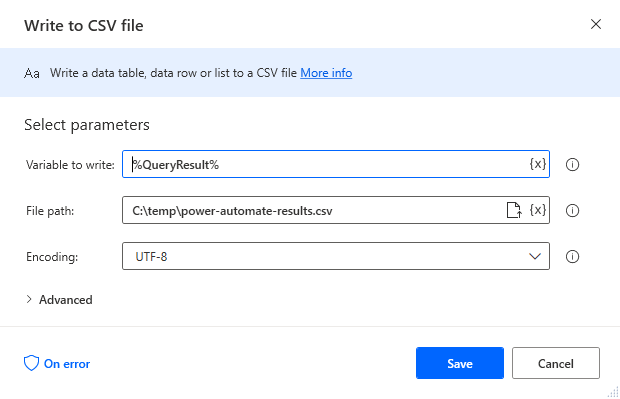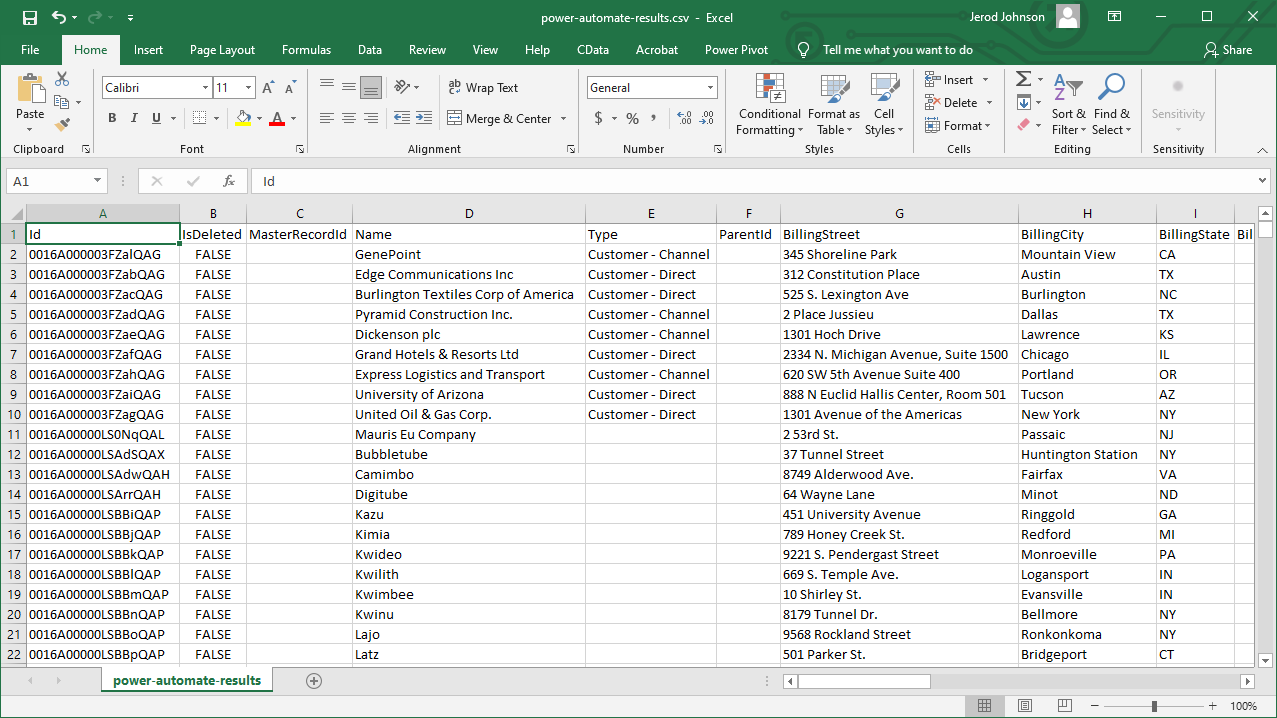Discover how a bimodal integration strategy can address the major data management challenges facing your organization today.
Get the Report →How to Access Live Certinia Data in Power Automate Desktop via ODBC
The CData ODBC Driver for Certinia enables you to integrate Certinia data into workflows built using Microsoft Power Automate Desktop.
The CData ODBC Driver for Certinia enables you to access live Certinia data in workflow automation tools like Power Automate. This article shows how to integrate Certinia data into a simple workflow, moving Certinia data into a CSV file.
Through optimized data processing, CData ODBC Drivers offer unmatched performance for interacting with live Certinia data in Microsoft Power Automate. When you issue complex SQL queries from Power Automate to Certinia, the driver pushes supported SQL operations, like filters and aggregations, directly to Certinia and utilizes the embedded SQL engine to process unsupported operations client-side (e.g. SQL functions and JOIN operations).
Connect to Certinia as an ODBC Data Source
If you have not already, first specify connection properties in an ODBC DSN (data source name). This is the last step of the driver installation. You can use the Microsoft ODBC Data Source Administrator to create and configure ODBC DSNs.
There are several authentication methods available for connecting to Certinia: login credentials, SSO, and OAuth.
Authenticating with a Login and Token
Set the User and Password to your login credentials. Additionally, set the SecurityToken. By default, the SecurityToken is required, but you can make it optional by allowing a range of trusted IP addresses.
To disable the security token:
- Log in to Certinia and enter "Network Access" in the Quick Find box in the setup section.
- Add your IP address to the list of trusted IP addresses.
To obtain the security token:
- Open the personal information page on certinia.com.
- Click the link to reset your security token. The token will be emailed to you.
- Specify the security token in the SecurityToken connection property or append it to the Password.
Authenticating with OAuth
If you do not have access to the user name and password or do not want to require them, use the OAuth user consent flow. See the OAuth section in the Help for an authentication guide.
Connecting to Certinia Sandbox Accounts
Set UseSandbox to true (false by default) to use a Certinia sandbox account. Ensure that you specify a sandbox user name in User.
When you configure the DSN, you may also want to set the Max Rows connection property. This will limit the number of rows returned, which is especially helpful for improving performance when designing workflows.
Integrate Certinia Data into Power Automate Workflows
After configuring the DSN for Certinia, you are ready to integrate Certinia data into your Power Automate workflows. Open Microsoft Power Automate, add a new flow, and name the flow.

In the flow editor, you can add the actions to connect to Certinia, query Certinia using SQL, and write the query results to a CSV document.
Add an Open SQL Connection Action
Add an "Open SQL connection" action (Actions -> Database) and configure the properties.
- Connection string: DSN=CData Certinia Source
After configuring the action, click Save.

Add an Execute SQL Statement Action
Add an "Execute SQL statement" action (Actions -> Database) and configure the properties.
- Get connection by: SQL connection variable
- SQL connection: %SQLConnection% (the variable from the "Open SQL connection" action above)
- SQL statement: SELECT * FROM Account
After configuring the action, click Save.

Add a Write to CSV File Action
Add a "Write to CSV file" action (Actions -> File) and configure the properties.
- Variable to write to: %QueryResult% (the variable from the "Execute SQL statement" action above)
- File path: set to a file on disk
- Configure Advanced settings as needed.
After configuring the action, click Save.

Add a Close SQL Connection Action
Add a "Close SQL connection" action (Actions -> Database) and configure the properties.
- SQL Connection: %SQLConnection% (the variable from the "Open SQL connection" action above)
After configuring the action, click Save.

Save & Run the Flow
Once you have configured all the actions for the flow, click the disk icon to save the flow. Click the play icon to run the flow.

Now you have a workflow to move Certinia data into a CSV file.

With the CData ODBC Driver for Certinia, you get live connectivity to Certinia data within your Microsoft Power Automate workflows.
Related Power Automate Articles
This article walks through using the CData ODBC Driver for Certinia with Power Automate Desktop. Check out our other articles for more ways to work with Power Automate (Desktop & Online):






